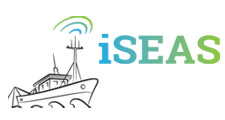Discards
Discards
FAO define fishing discards as “the portion of the total organic material of animal origin in the catch, which is thrown away or dumped at sea for whatever reason. It does not include plant materials and post-harvest waste such as offal“. Currently this is one of the most important issues in fisheries, both from a socio-economic and an environmental point of view.
Discards constitute a purposeless waste of valuable marine resources which plays an important role in the depletion of marine populations.
Ecological adverse impacts:
- Changes in the ecosystem and in the overall structure of trophic webs take place.
- Discarding of juveniles of target species results in a future reduction of spawning biomass.
- Discarding of mature specimen of target species immediately reduces the spawning biomass of the stock.
Socio-economic adverse impacts:
- Discarded fish does not contribute to present or future fishing income (while non-discarded fish will be a resource in the future).
- Long term survival of the fishing industry depends on maintenance of healthy marine ecosystems.
Discards are considered as an unacceptable waste of resources and a New Common Fisheries Policy (CFP) has been set up by the European Commission to mitigate and prohibit them:
Regulation (EU) 1380/2013 of the European Parliament and of the Council of 11 December 2013
Objectives
The main objective of LIFE iSEAS is to demonstrate that a sustainable scenario (in terms of biological and socio-economic indicators) of the EU fisheries is possible through the enhancement of the real application on the fishing sector of existent knowledge and innovative solutions for discards reduction and management.
The LIFE iSEAS paradigm
Fishing patterns
If the areas with higher discards levels (no commercial, no quota, no size) were precisely known in real time, other vessels, working in the area, would surely try to avoid these specific zones.
Efficient use
Nowadays, a quite large amount of fishing organic matter is used to produce fish meal/oil, generating products of low-medium value.
If the unwanted catch could be kept on board and landed, this would open an opportunity to use that biomass in a more efficient way, becoming a complementary source of income for the industry.
It is possible to demonstrate the validity of the proposed approach to guarantee the sustainability of fisheries by addressing:
Accurate data on discards composition, volumes and fishing zones
- Problems related to management of unwanted catch
- Technical procedures to obtain value-added products
- Socio-economic aspects related to the different activities in the value chain
According to this objective, the aims of iSEAS project are:
- To test the implementation and performance of the iObserver on board of oceanographic vessels. Which consist on installing a set of standarized technologies able to perform the work of qualified observers.
- To optimize the fishing activity through the definition of a reliable tool based on mathematical models that analyze the spatio-temporal conditions of considered fishing areas. This tool will help:
2a) To take real time decisions over fishing activity, defining more appropriate areas/periods/species in terms of lower discard levels, and to develop effective short-time policies over marine resources/fishing areas that guarantee the stocks populations while maximizing the yield of the fishing activity.
2b) To develop effective short-time policies over marine resources/fishing areas that guarantee the stocks populations while maximizing the yield of the fishing activity.
To perform more selective fishing, saving fuel and on-board handling processing time.
- To define a real fully operative in-land demonstration facility for discards value-added processes and trading name iDPV (Integral Discards Processing and Valorization Point.
- To demonstrate the environmental and socio-economic impacts/benefits that the implementation of proposed innovative solutions and the new management model may have to the fishing sector.
Partners
Actions
















